As you lose weight, several adaptations take place in the body to reduce your daily energy expenditure.
For example, a smaller body burns fewer calories than a larger body. Thus, it takes less energy to maintain your weight at the end of a diet than when you began the diet. A smaller body also means you burn fewer calories when exercising and moving around. If you’re in a caloric deficit, you’re eating fewer calories by default, which means less energy is used to digest and store the foods you eat.
So you might start the diet expending 2500 kcals/day, but by the time you end the diet, due to all the mechanisms mentioned above, your daily expenditure might have dropped to 2100 kcals/day.
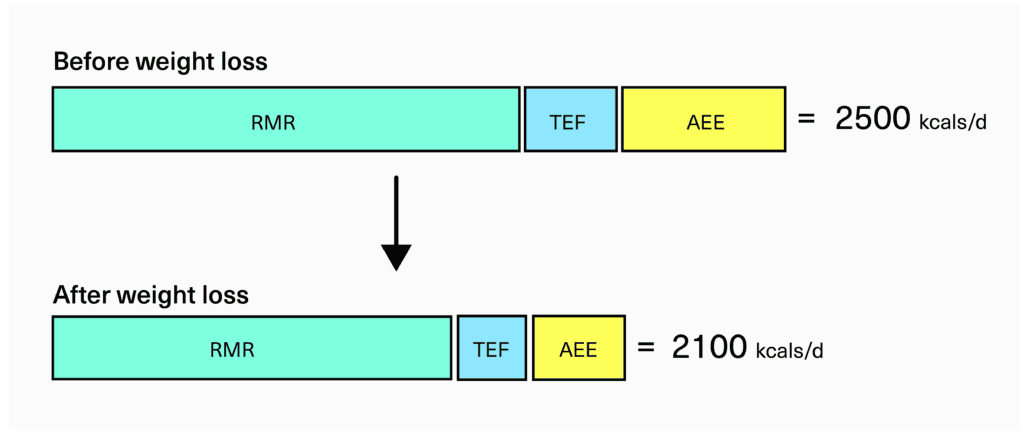
These adaptations are collectively called ‘metabolic adaptation’, and it’s totally normal and to be expected. After all, the body is just doing its job by trying to save you from what it thinks is impending starvation.
But once you end the diet and transition from a caloric deficit to caloric maintenance, metabolic adaptation is largely reversed. 1
Except in one study.
Not only did the participants experience a staggering amount of metabolic adaptation, but it persisted several years after they’d finished the diet. Since then, this study has become the poster child for metabolic damage––the idea that dieting causes irreversible damage to the metabolism, which makes weight maintenance impossible and sets people up to regain weight.
Recently, Kevin Hall––the lead researcher on the original study––went back and reanalysed the paper and offered a tentative alternative as to why these individuals were experiencing such a massive reduction in their metabolism. Spoiler alert: It likely wasn’t ‘metabolic damage’.
Let’s talk about that.
Setting the scene
In 2012, a study investigated the effects of metabolic adaptation on contestants of “The Biggest Loser”––an absolute dumpster fire of reality TV where contestants with obesity engage in several hours of intense exercise and severe caloric restriction to lose as much weight as possible in the hopes of winning a cash prize.2
Exercise–especially resistance training–can help preserve muscle mass during weight loss, which can mitigate reductions in metabolism and help prevent weight regain. The researchers wanted to determine whether or not this would hold true in the Biggest Loser contestants.
The results showed the contestants did indeed largely preserve their muscle mass, with most of the weight loss coming from body fat.
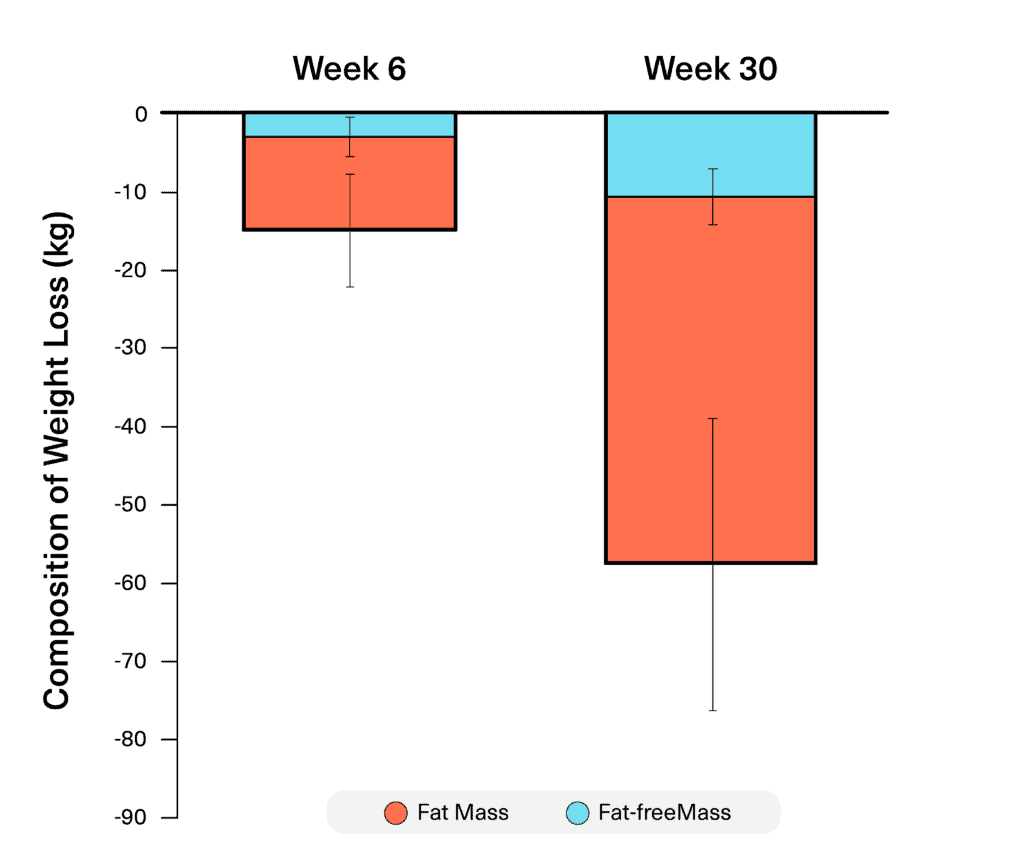
Yet, despite the contestants managing to hold onto most of their muscles, their metabolism took a massive hit. By the end of the 30-week competition, their metabolism had dropped by a whopping 789 (± 483) kcal/d. An amount that was ~500 kcal/d greater than it should have been based on the change in body composition.
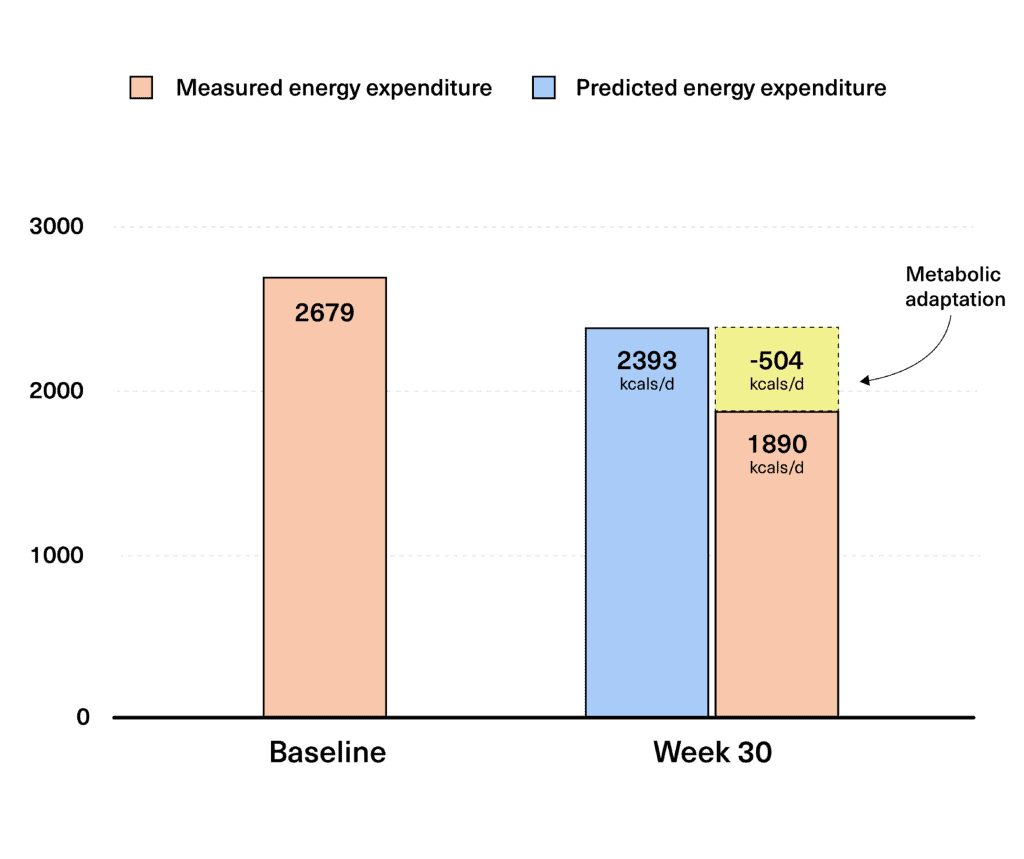
Just to contextualise this: Up until this study was published, the consensus was metabolic adaptation did occur but was fairly small (3-5%). The Biggest Loser contestants’ metabolism had adapted closer to 20%. 3
While this finding was surprising, it wasn’t that shocking; metabolic rate tends to decrease with weight loss, and the greater-than-expected drop in metabolism experienced by the Biggest Losers was likely just a byproduct of the magnitude of weight lost and the extreme training and nutrition protocol they were following.
Just to illustrate how extreme their weight loss protocol was, Kevin Hall, the senior researcher on the Biggest Loser study, did some mathematical modelling and calculated that, while the contestants were on the show, they averaged a 65% caloric deficit while doing more than three hours of intense exercise every day. 4
The part where it gets weird
Fast forward to 2016, and 14 of the original 16 Biggest Loser contestants were brought back into the spotlight as researchers wanted to investigate whether the participants were still experiencing metabolic adaptation. 5
To reiterate the point I made at the start: While some metabolic adaptation does occur during weight loss, it’s largely reversed once you return to maintenance.
But this wasn’t the case for the Biggest Losers, who were still experiencing metabolic adaptation years after the show had ended to the tune of ~500 kcals/d. That is, their metabolism was ~500 kcals lower than it should have been based on the weight that was regained.
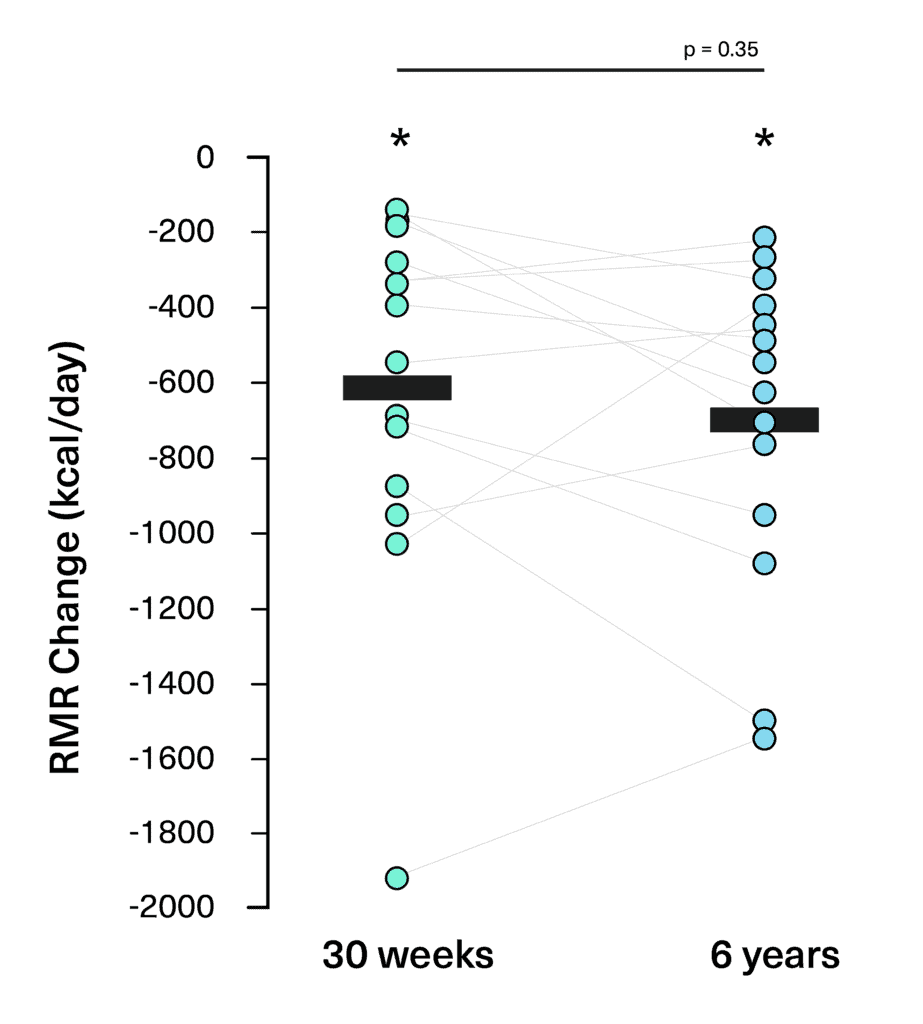
This finding led to the notion the Biggest Loser participants had ‘damaged’ their metabolism, and all diets were doomed to fail (despite the fact the contestants maintained, on average, a clinically significant ~12% weight loss).
Time for a plot twist: Metabolic adaptation wasn’t linked with weight regain
That wasn’t a typo.
Contrary to the researchers’ hypotheses that participants with the highest degree of metabolic adaptation would be the ones who would regain the most weight, the participants with the highest degree of metabolic adaptation were also the ones who more successfully maintained their weight loss.
What the hell’s going on here?
A 2017 study looked at how changes in energy intake and physical activity were related to weight regain in The Biggest Loser competition. 6 It found changes in energy intake were not significantly correlated with the weight regained in the six years after the Biggest Loser competition (Image A below). However, physical activity was “significantly inversely related to weight regained” (Image B below).
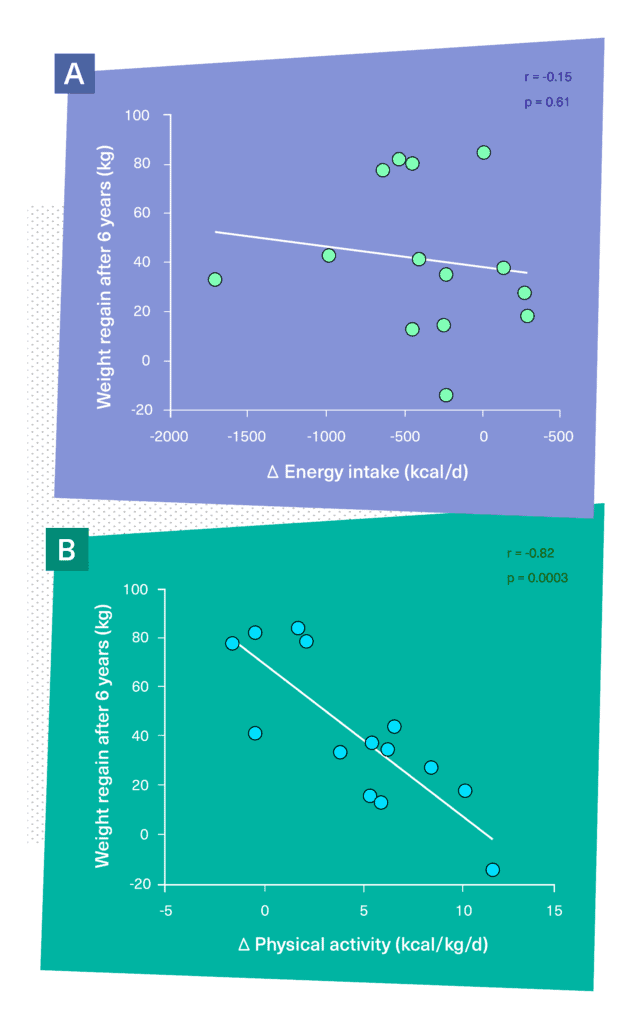
The participants who maintained greater weight loss (~25%) increased their physical activity by 160% compared to an increase of only 34% in weight regainers.
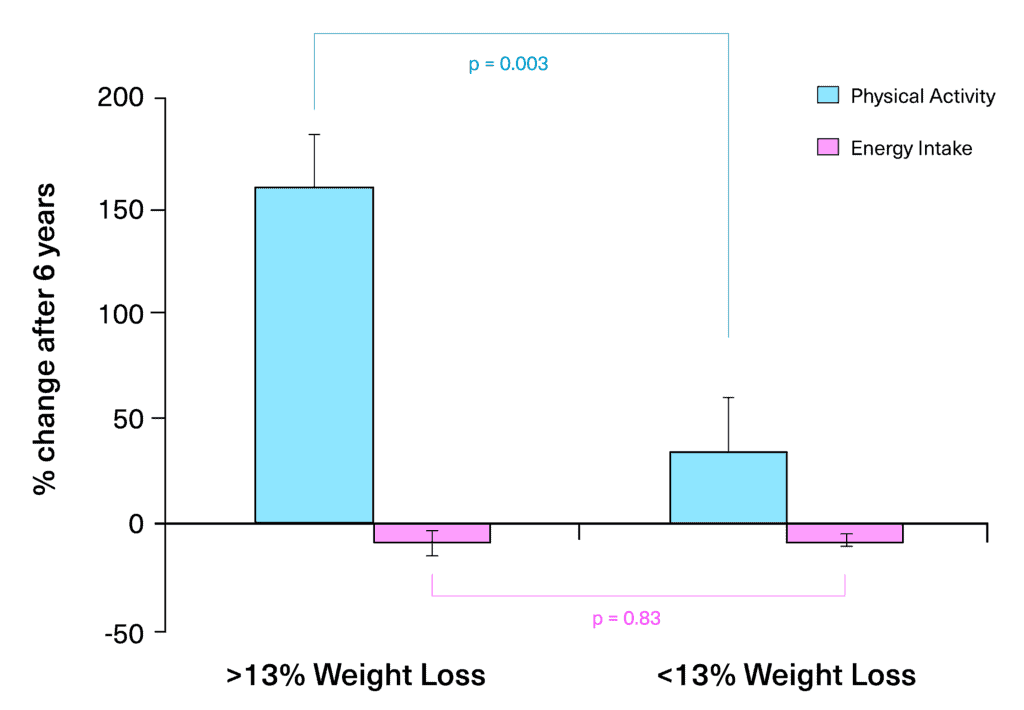
If you’re wondering where I’m going with all of this, hang tight; we’re almost at the finish line.
Metabolic damage or constrained energy?
Around the same time the initial Biggest Loser study was published, a group of researchers led by anthropologist and evolutionary biologist Herman Pontzer published a study on a topic that, on the surface, didn’t seem related at all.
Pontzer had been studying the Hadza––a modern hunter-gatherer population in Tanzania––when he found something bizarre. Despite the Hadza’s high levels of physical activity, once adjusted for fat-free mass, their daily energy expenditure wasn’t too dissimilar from their more sedentary Western counterparts in the US and Europe. 7
In 2016, Pontzer and colleagues published a study putting forward the constrained energy model: Energy expenditure does increase with more activity, but only to a point. Once physical activity gets really high, the body will adjust other components of the metabolism to keep your daily energy expenditure within a narrow range. 8
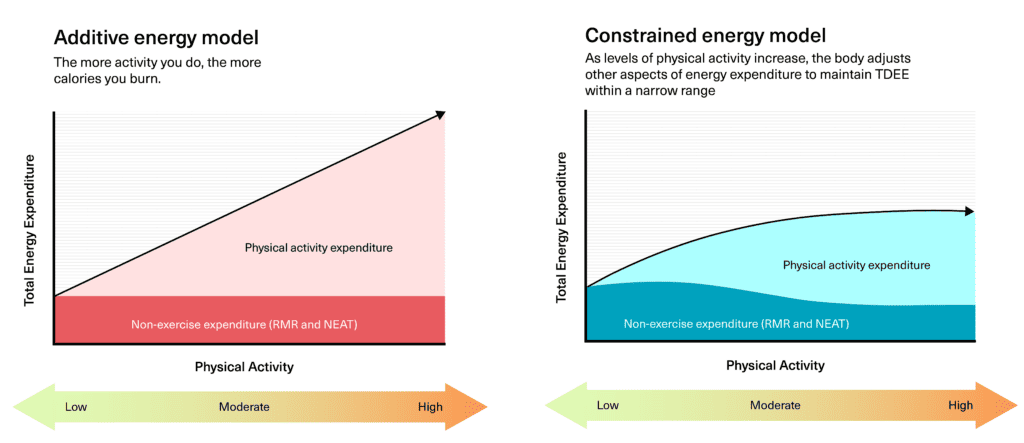
So, could a better explanation for the significant reduction in the Biggest Loser contestants’ metabolic rate be a result of the constrained energy model?
Recently, Kevin Hall went back and reinterpreted the Biggest Loser study through the lens of the constrained energy model. He noted the contestants’ physical activity levels remained high six years later, with a median increase of ~80% compared to before the competition. Moreover, those participants who sustained the highest levels of physical activity were also the participants who exhibited the greatest degree of metabolic adaptation. 9
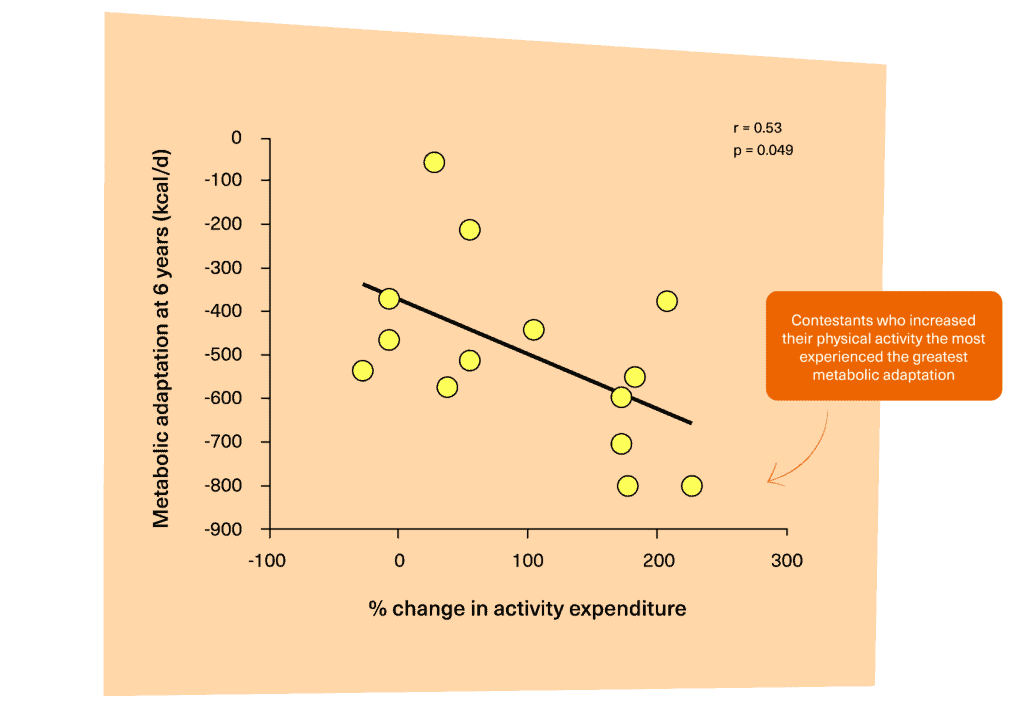
In other words, because these contestants maintained high levels of physical activity, their bodies had decreased other components of their metabolism to keep their daily energy expenditure ‘constrained’ within a narrow range per the constrained energy model.
Now, it’s important to mention Kevin Hall’s reinterpretation wasn’t a randomized controlled trial but speculation based on newer research published on the constrained energy model. That said, it does make more sense than the whole, ‘the participants damaged their metabolism’. Especially when considering the Biggest Loser study is the only study to have reported such an extreme level of metabolic adaptation (and one that’s not been replicated since). The rest of the research––where the weight loss protocols haven’t been this insane––suggests some metabolic adaptation does occur during weight loss, but this largely dissipates once you return to maintenance. 1
What to make of all of this?
In this reinterpretation of The Biggest Loser study, it seems the greater-than-expected reduction in the contestants’ resting metabolic rate was likely a result of their bodies constraining energy to account for their high levels of physical activity and not because their metabolism was ‘damaged’.
More importantly, metabolic adaptation doesn’t make weight loss impossible, nor does it mean you’re doomed to regain weight. The Biggest Losers saw their metabolic rate tank by over 700 kcals, yet they all lost a serious amount of weight. Additionally, the follow-up study found those who experienced the most metabolic adaptation were also the ones who maintained the most weight loss.
But we need to keep this study in context
This was one study done in a very specific population that was engaging in methods of weight loss that, let’s be honest, aren’t practical for any normal person to adhere to. Do you think you can stick to a 65% calorie deficit and engage in several hours of exercise every day for over half a year?
Yeah, didn’t think so.
For everyone else, metabolic adaptation is par for the course when dieting and will largely dissipate as you return to maintenance. And even if some metabolic adaptation does hang around, the real question is: Does it occur to a degree that would meaningfully impact your progress? The research so far would lean towards no.
Metabolic adaptation might result in less weight loss than anticipated 10 or slightly stretch the timeline to your goal. 11 But neither of these things will prevent you from losing weight.
This reality underscores two important truths. First, you’re not going to lose weight linearly, and sooner or later, you’ll need to make adjustments to your diet to overcome the metabolism adapting to weight loss. Second, accepting the fact you might well need to eat fewer calories than you think you should be in comparison to someone of the same height, weight, and sex. I’m not going to sit here and act like this doesn’t suck or that it won’t make weight loss a bit more challenging for some, but unfortunately, it is what it is.
Taking all of this together, it’s no surprise then that studies have consistently demonstrated metabolic adaptation isn’t a major roadblock to maintaining weight loss, nor is it the weight gain boogeyman it’s made out to be. 12
An important, yet often missed lesson from the Biggest Loser study
With all of the buzz that ‘metabolic damage’ generates, the more pertinent lesson from the Biggest Loser study tends to get glossed over (aside from Hey, maybe don’t do dumb shit to lose weight): The importance of physical activity for long-term weight maintenance. And it can’t be understated. To quote from a recent systematic review: “Increased physical activity was the most consistent positive correlate of weight loss maintenance.” 13
There are several reasons why exercise can help with weight maintenance, but an idea gaining traction over the past few years is ‘energy flux’.
At the end of a diet, you can approach weight maintenance in two ways:
- You can eat less (compared to what you were eating before the weight loss) paired with low levels of physical activity, known as a ‘low-flux state.’
- You can eat slightly more paired with higher levels of physical activity, i.e. a ‘high-flux state.’
While both states lead to energy balance, a high-flux state can help mitigate weight regain due to better regulation of appetite and closing the ‘energy gap’––the difference in energy requirements before and after weight loss. 14
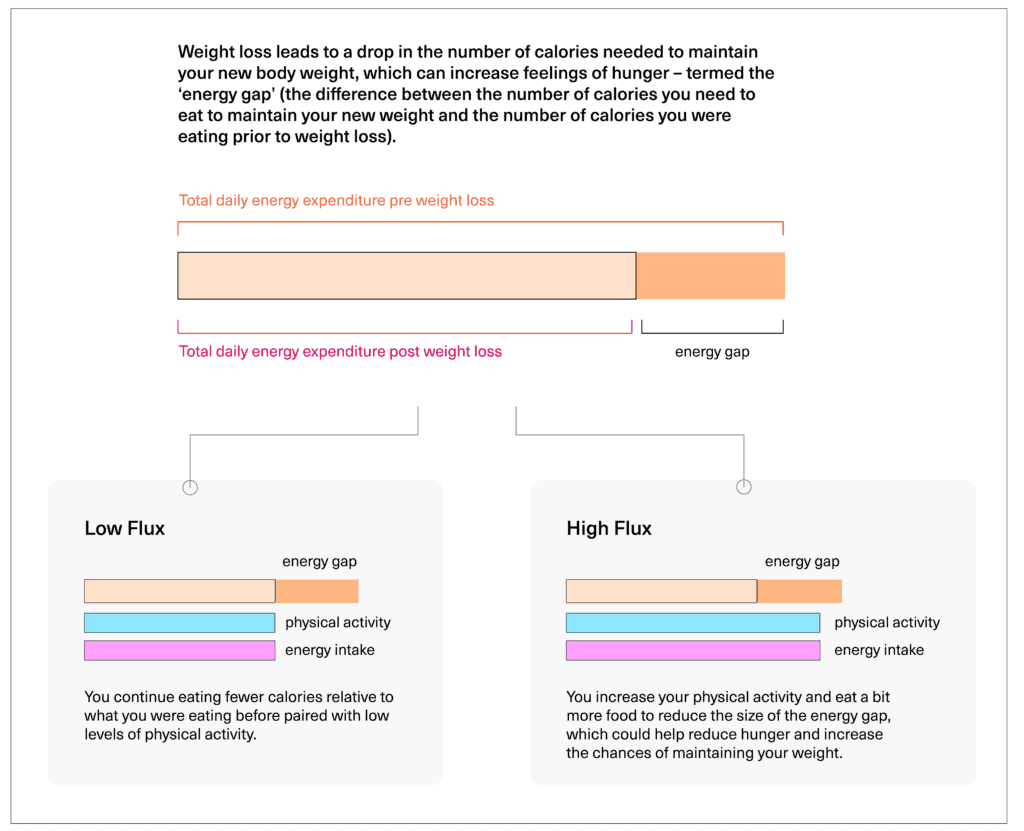
For example, a 2018 review noted the relationship between physical activity and energy intake being J-shaped: Appetite is dysregulated at low levels of physical activity, creating a mismatch between the energy expended and the amount of food consumed, leading to weight gain. On the other hand, as physical activity increases, so too does satiety signalling, which reduces the amount of food consumed. 15
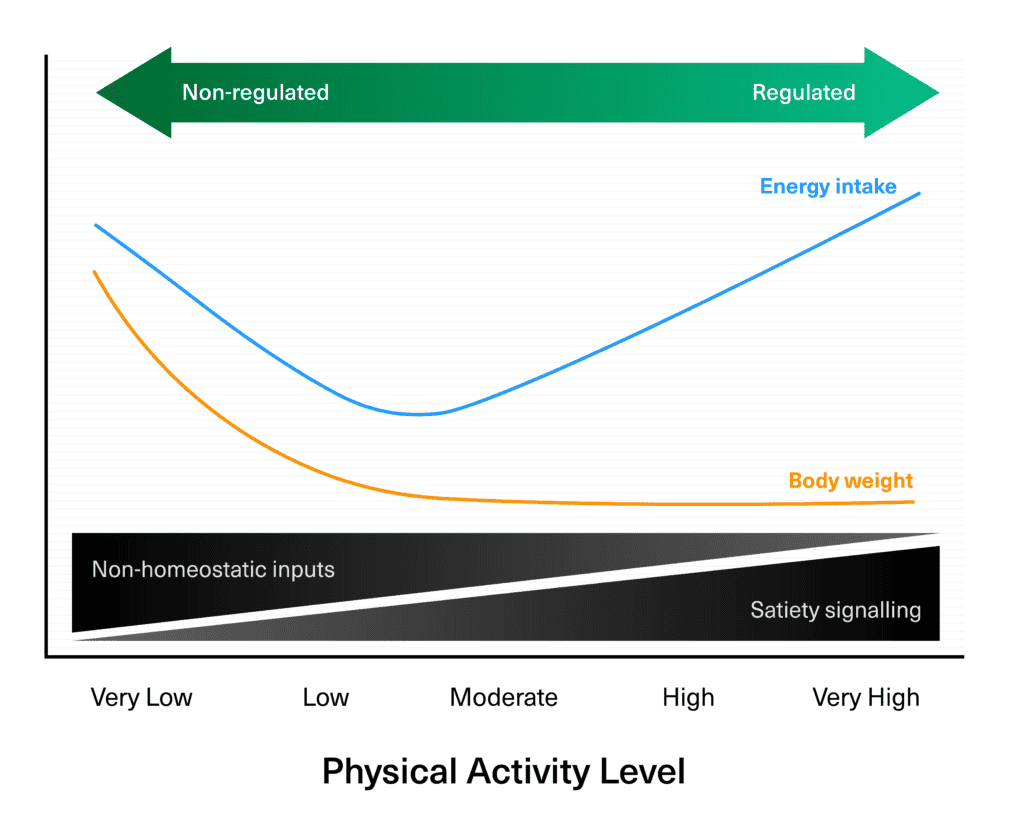
This is all fine and dandy. But there’s something that’s probably been gnawing at you as you’ve been reading the last few paragraphs: Won’t the constrained energy model render any increases in physical activity moot?
No, because that isn’t what the constrained energy model suggests. As I mentioned above, the constrained energy model states that physical activity does increase energy expenditure, but after a point, the increase isn’t linear.
For example, Careau and colleagues found energy compensation averaged 28%, with a lot of variance around the mean; leaner individuals experienced less compensation (29.7%), while individuals with more body fat experienced more compensation (45.7%). 16 So, while some people will experience more compensation than others, any increase in expenditure isn’t wholly negated.
A few years back, I was having a conversation with a friend about metabolic adaptation, and he quipped, “People worry so much about metabolic adaptation, but nobody talks about behavioural adaptation.”
He’s right.
The behaviours and habits you adopt are going to have a far greater impact on your ability to both make and maintain your progress than some transient adaptations that occur during weight loss.
Here’s an example of what I mean. In a recent study, metabolic adaptation was present after participants had lost 5% of their baseline weight (-85 kcals/d), and it persisted after a subsequent 8-month weight maintenance period (-72 kcals/d). 17
But here’s the interesting bit: The researchers found participants slightly decreased their sedentary time and increased the amount of physical activity during the 4-month weight-loss period. But by the end of the study (12-month mark), the participants increased their sedentary time, and their physical activity levels dropped back to baseline. As the researchers write:
The lack of a successful WL [weight loss] and its maintenance may be mostly due to behavioral issues, such as increasing food intake and/or decreasing physical activity.
And isn’t this what we see in the real world?
Someone starts a fad diet and does all the things for a few weeks or months, and as soon as the diet ends, they go right back to their old behaviours and gain back the weight.
Here’s the thing: People wrongly assume maintenance is this thing that happens after the diet ends. But maintenance begins on day one of your diet. The same habits and behaviours that will help you lose weight are the same habits and behaviours that will help you maintain your weight. Notably:
- Eat a majority whole food nutrient-rich diet with adequate protein.
- Don’t unnecessarily restrict foods you enjoy, but learn how to make these foods a part of your eating plan.
- Try to get in movement throughout the day and be as physically active as is feasible for you.
- Focus on strength training to build and maintain muscle.
- Monitor your progress in some capacity.
To slightly amend a popular quote: Genetics load the gun, but your habits and behaviours pull the trigger.
Instead of worrying about things largely out of your control (like metabolic adaptation), be more concerned about the things you can control (see above) because these are the things that will help you make and later maintain progress.
Thanks for reading. If you enjoyed this, you’d love the Vitamin

95% of my new content is only being sent to my email list. One email every Thursday, filled with actionable, evidence-based fitness advice to help you with your goals. If you enjoyed this, you’d love my emails. You can learn more and subscribe for free here